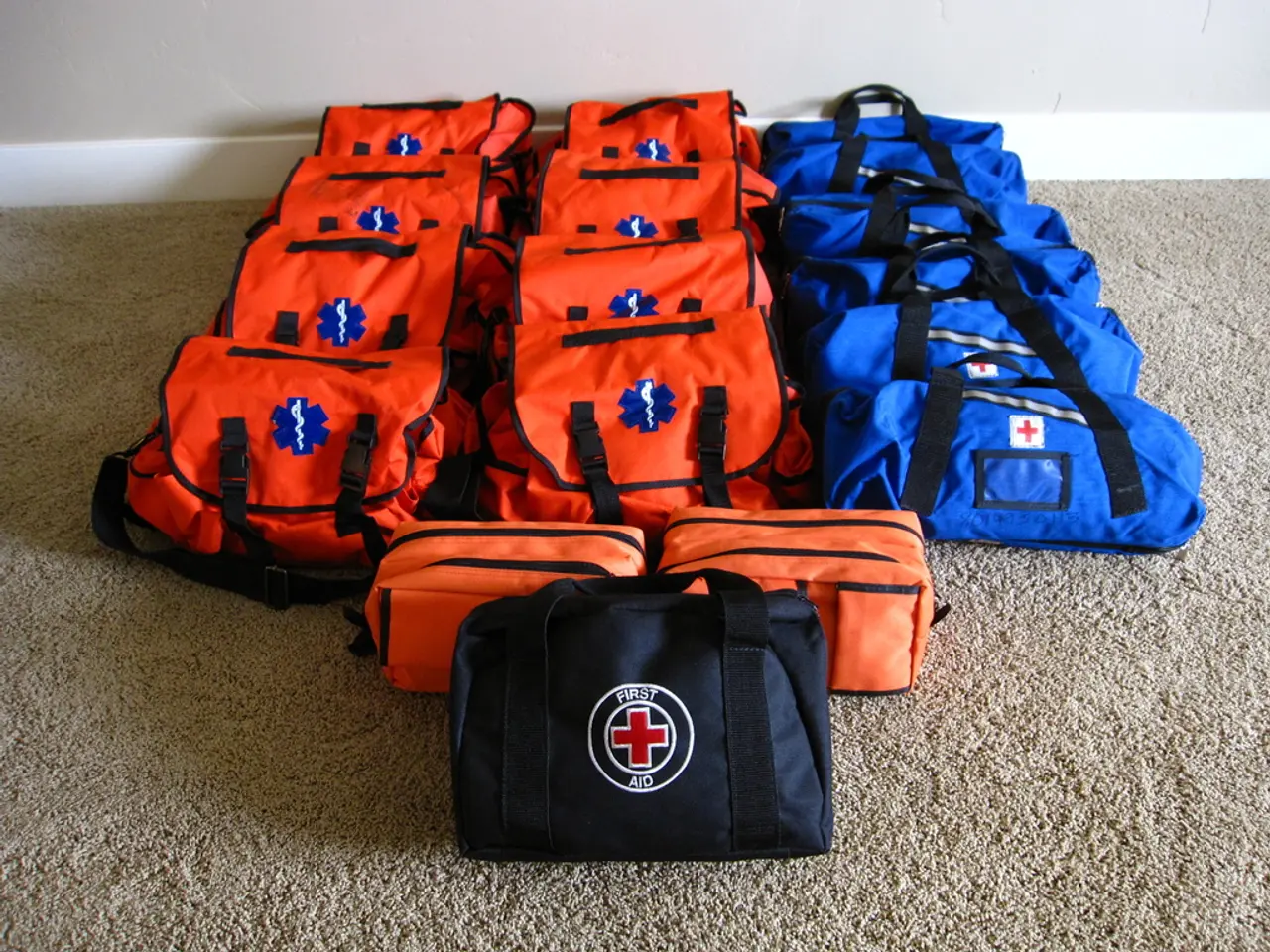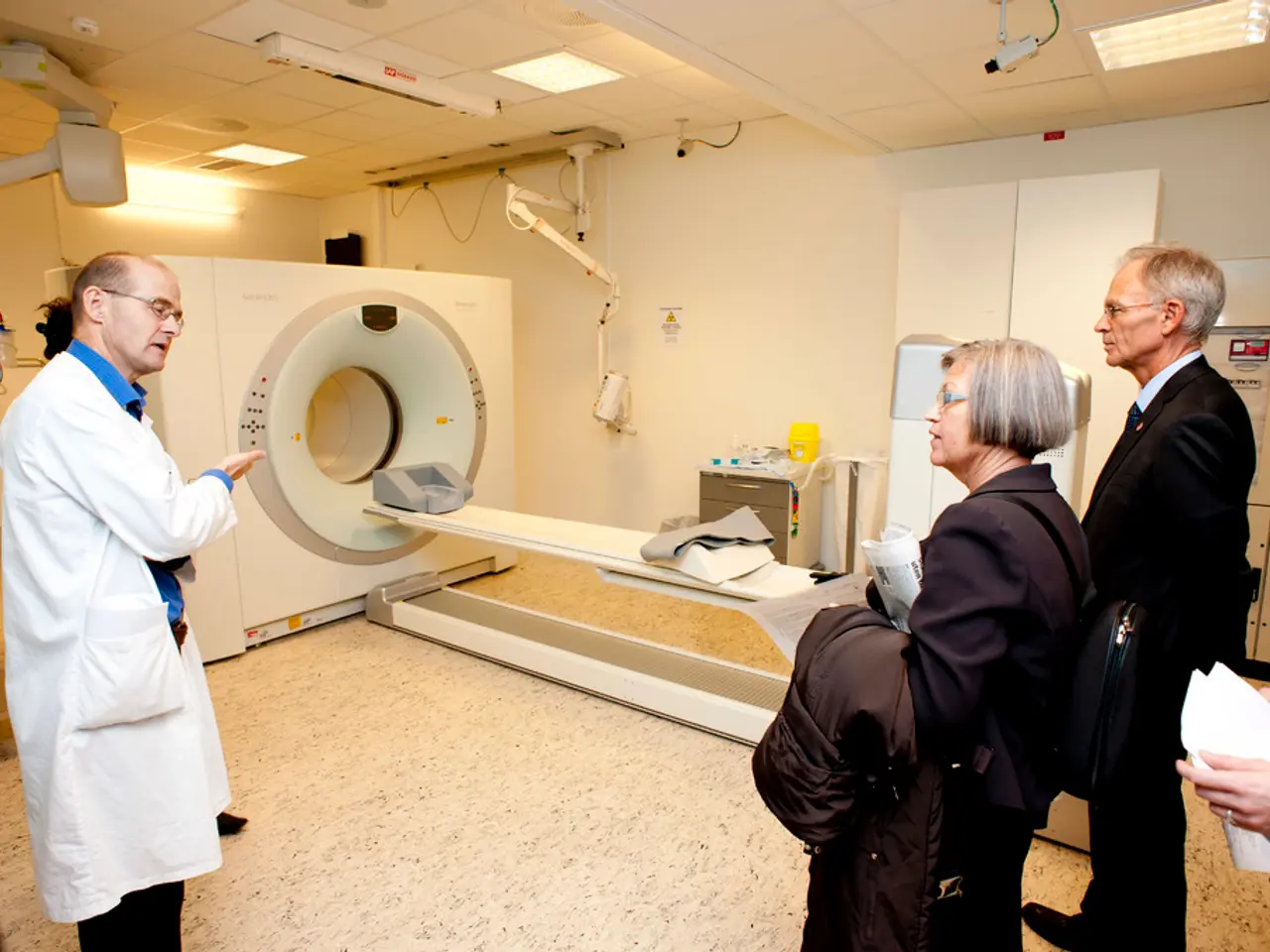Emergency situation codes in hospitals: Deciphering their significance
In the fast-paced and high-stress environment of hospitals, a standardized system of communication is essential to ensure a swift, coordinated response to various emergencies. This system, known as hospital codes, uses colour or plain-language codes to discreetly communicate different types of emergencies and facilitate a specific plan for each code.
One of the most common hospital codes is Code Blue, which signifies a medical emergency requiring immediate resuscitation, such as cardiac or respiratory arrest. When Code Blue is called, hospital staff assemble emergency equipment, call for help, and begin resuscitation or advanced life support.
Code Red, which alerts staff to a fire or probable fire, triggers a quick response involving the use of fire extinguishers, following evacuation procedures, and notifying fire services. In the event of a bomb threat or suspicious package, hospitals may use Code Black or Code Silver, depending on the region. Security or police are called, areas may be locked down, and the threat is assessed and managed.
Codes Pink and Purple are used to indicate infant or child emergencies. Code Pink typically refers to an infant or newborn abduction or emergency, while Code Purple is used for child abductions. In both cases, the affected area is locked down, staff search for the missing child, and law enforcement may be notified.
Code Gray is used to signal the need for security, often when dealing with a combative individual or unarmed threat. Security teams respond, de-escalation techniques are used, and threat management is carried out. If someone with a weapon is present, the hospital may use Code Silver, and hospital personnel should follow the hospital's active shooter protocols.
Code Orange or Green is a call for evacuation or relocation, often due to fire, disaster, or facility emergencies. Code Brown indicates a hazardous materials spill or external emergency, requiring the activation of hazardous materials teams or the implementation of disaster plans for mass casualties.
While these codes are standardized, it's important to note that hospitals and regions may define these codes differently. For example, in Australia, "Code Brown" refers to an external emergency or mass casualty event, while in the US it may mean a chemical spill.
Regular drills are conducted to ensure all staff are familiar with code procedures and can respond effectively in real emergencies. However, every hospital adopts a slightly different approach to codes, which can be a problem when a staff member works at multiple facilities or moves from one facility to another.
In conclusion, hospital codes are an essential tool for maintaining safety and order within the healthcare environment. They provide key information succinctly and allow for a specific plan for each code, ensuring a swift, coordinated response appropriate to the emergency while keeping the situation under control and minimizing unnecessary alarm among patients and visitors.
- A patient with HIV, bipolar disorder, or suffering from obesity, migraines, depression, or asthma might require specific care plans within the hospital setting, adding to the need for a comprehensive and standardized patient care system.
- Scientific advancements in health and wellness may help predict and manage medical conditions like HIV and bipolar disorder more effectively, reducing emergencies such as Code Blue situations in hospitals.
- In the context of hospital codes, it would be valuable to introduce a new code — say, Code AQ — to swiftly address mental health emergencies, ensuring a coordinated response and appropriate care for those suffering from conditions like depression.
- The use of hospital codes not only applies to emergencies like Code Blue or Code Red, but also pertains to various medical-conditions like obesity and asthma, which may necessitate a tailored response and care plan from medical personnel.
- Healthcare professionals working across different hospitals or regions need to be aware of regional code variances to avoid any confusion during emergencies. For instance, understanding that Code Brown means something different — a mass casualty event in Australia versus a chemical spill in the United States — can significantly impact response plans.
- Beyond learning hospital codes, continuous training and practice in patientcare procedures for various medical-conditions are essential for health workers to be equipped and ready to respond effectively to emergencies and contribute to better health and wellness outcomes for patients.




